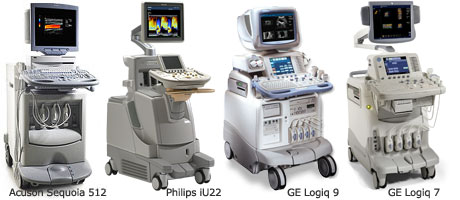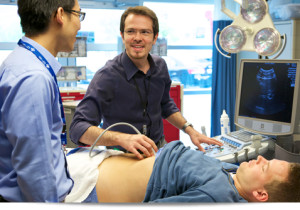Since the 1950s, pregnant women have relied upon ultrasound technology for the first glimpse of their unborn child. Families today are most familiar with the 3D ultrasound, which provides an image of the fetus and can be used to determine its gender and overall health. However, advancements in ultrasound technology are making it possible for families to witness the personality of the unborn child in addition to their physical characteristics.
What are 4D ultrasounds?
A 4D ultrasound, also known as a 4D scan or prenatal imaging, takes three-dimensional ultrasound images and adds the fourth dimension: time. When the fourth dimension is added to the still images from a 3D ultrasound, it results in live action images of the fetus. The images are then shown so rapidly that the movements of the fetus are witnessed in real time.
What is the purpose of 4D ultrasounds?
When the pregnancy reaches 26 weeks, 4D ultrasounds can capture the personality and mannerisms of the unborn child. This is extremely beneficial. Doctors can determine if there are any abnormal physical developments by the way that the baby moves. This allows doctors to diagnose Down syndrome and other conditions sooner. 4D ultrasounds also allow doctors to monitor the blood flow through the arteries and veins of the fetus, making sure that all of the organs are functioning at healthy levels. They can capture more detailed images of the fetus’ physical features, offering higher quality keepsake photos for the parents.
How does 4D differ from 3D?
4D and 3D ultrasounds both allow doctors to detect structural problems with the uterus, placental abnormalities, abnormal bleeding, ovarian tumors or fibroids, placenta location, and analyze the development of the fetus. However, 3D ultrasounds only result in still images and cannot show personality development through video-like image rendering.
Are 4D ultrasounds safe?
Some are concerned about the safety of 4D ultrasounds since the energy level may be higher in order to render a higher quality image. The U.S. Food and Drug Administration is responsible for regulating the energy levels used to conduct ultrasounds and consider them to be safe overall, as it has not been proven that 4D ultrasounds require higher energy levels. However, many doctors suggest avoiding unnecessary ultrasounds, which has caused safety concerns among patients.
What impact will 4D ultrasounds have on the future of the medical industry?
Advancements in ultrasound technology can allow medical professional to diagnose abnormalities in a fetus, as well as in other patients. With 4D ultrasounds doctors can view the inner workings of the human body in real time, and use that information to prevent the development of life threatening diseases. With continuing research in ultrasound technology, it may soon be possible to safely make 4D movies of a fetus’ development in the womb. Although some businesses have already begun making these movies, the American Medical Association advises against it. Current ultrasound technology can lead to an increase in fetal temperature, which may cause abnormal environmental stress to the unborn child.
 Ultrasound machines use the same idea. An ultrasound wand sends and receives very high frequency sounds waves.
Ultrasound machines use the same idea. An ultrasound wand sends and receives very high frequency sounds waves. 

Recent Comments